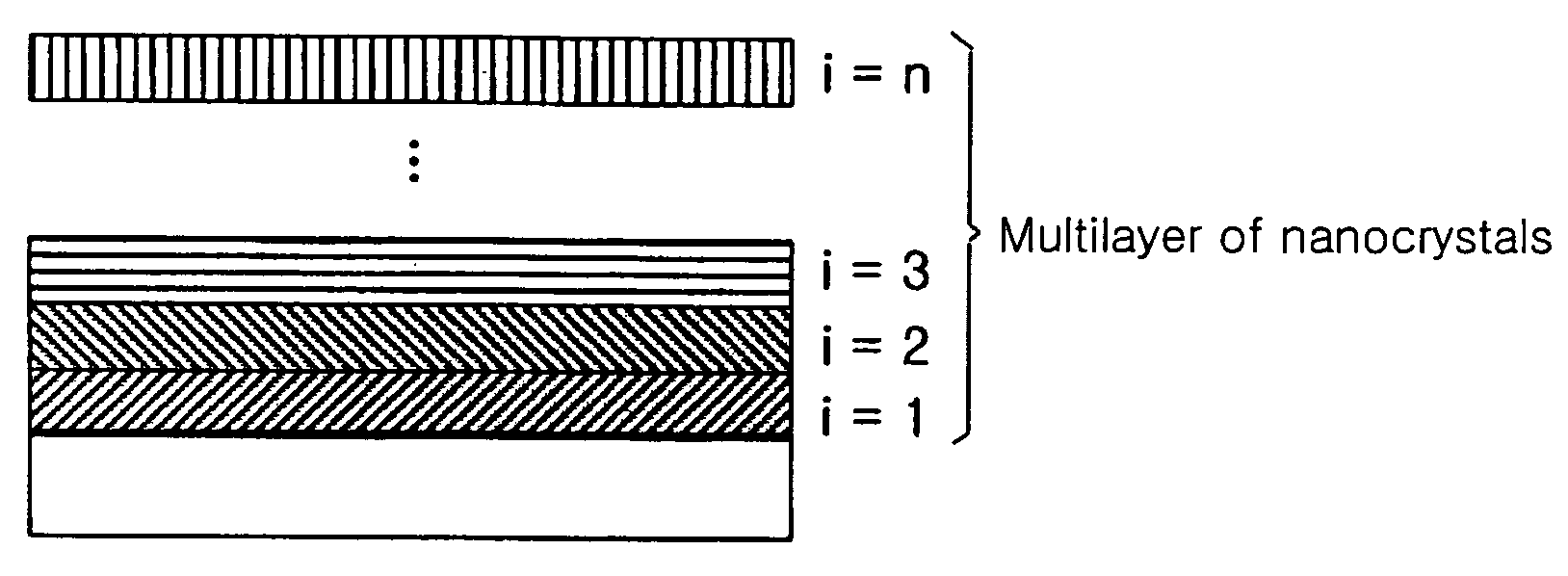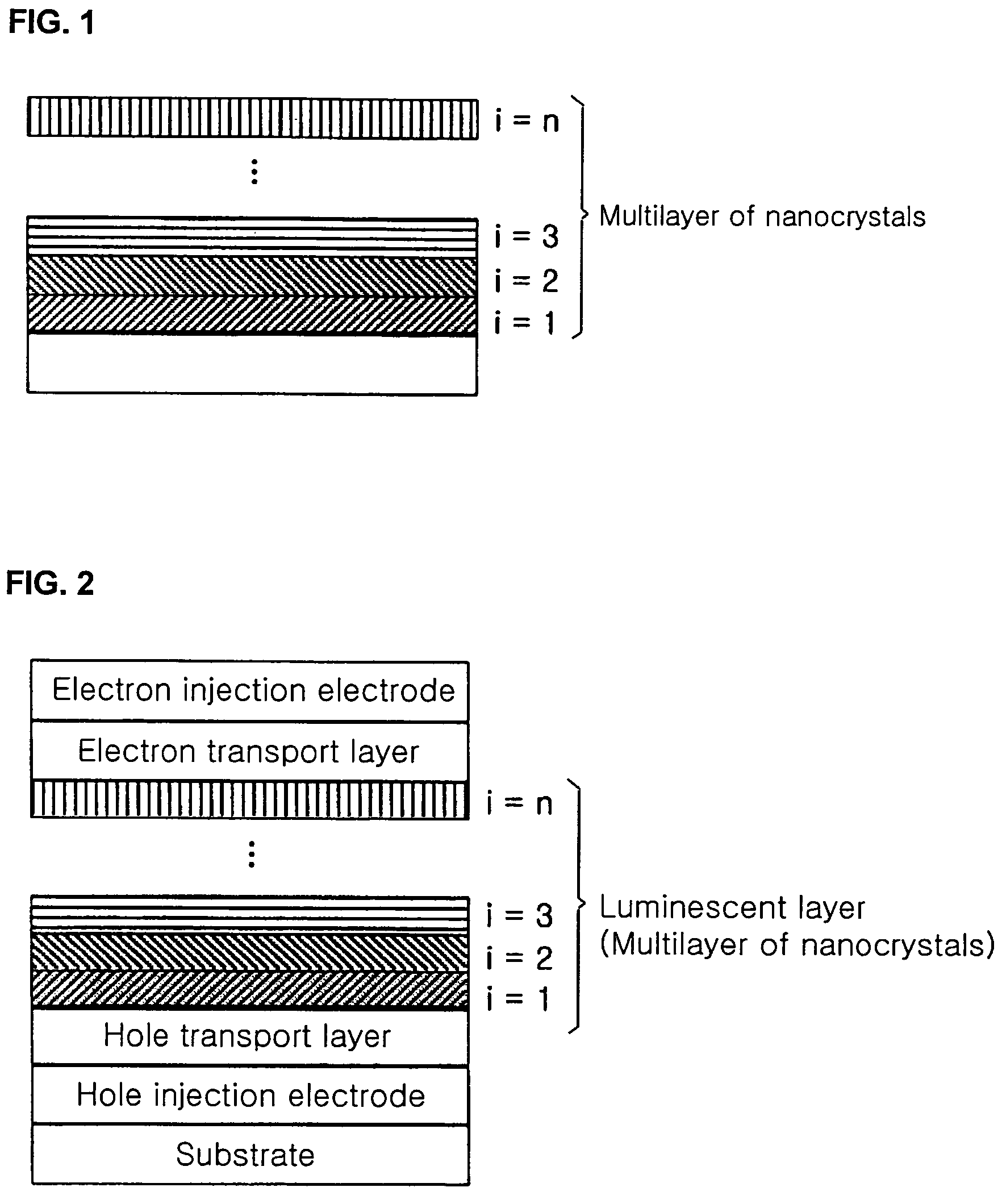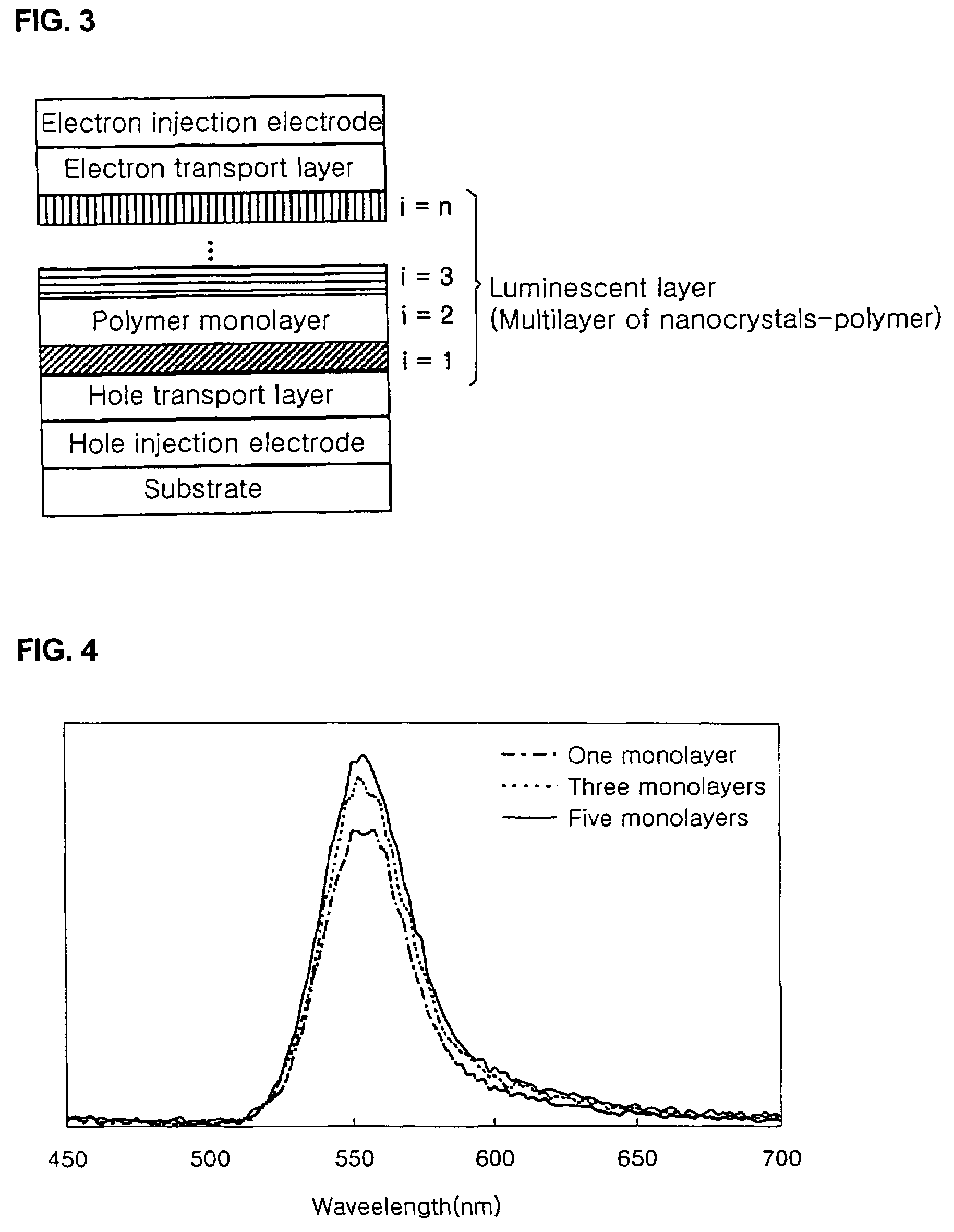Method for preparing multilayer of nanocrystals, and organic-inorganic hybrid electroluminescence device comprising multilayer of nanocrystals prepared by the method
a nanocrystal and nanocrystal technology, which is applied in the direction of solid-state devices, discharge tubes/lamp details, crystal growth processes, etc., can solve the problems of not specifically describing the process of forming a monolayer of nanocrystals or preparing a multi-layer of nanocrystals using the monolayer, and rendering the overall procedure more complex, etc., to achieve the effect of simple manner
- Summary
- Abstract
- Description
- Claims
- Application Information
AI Technical Summary
Benefits of technology
Problems solved by technology
Method used
Image
Examples
example 1
Preparation of Multilayer of CdSeS Nanocrystals Surface-Coordinated by Photosensitive Compound
[0065]After the toluene dispersion of CdSeS nanocrystals (1 wt %) prepared in Preparative Example 1 was dropped onto a glass substrate cleaned with isopropyl alcohol (IPA), spin coating was performed at 2,000 rpm for 30 seconds. The coated glass substrate was heated on a heating plate at 50° C. to form a monolayer of the nanocrystals. The monolayer was placed in a UV exposure system at an effective wavelength of 200˜300 nm, and then UV light (800 W) was irradiated to the monolayer for about 300 seconds. The toluene dispersion of nanocrystals was dropped onto the UV-exposed monolayer, which was then spin-coated, dried and exposed to UV light under the same conditions as the previous formation procedure of the monolayer of nanocrystals. Thereafter, this procedure was repeated four times to prepare a multilayer (5-layer) of nanocrystals. FIG. 4 shows photoluminescence spectra of the multilayer...
example 2
Fabrication of Electroluminescence Device Comprising Multilayer of Nanocrystals-Polymer as Luminescent Layer
[0066]An ITO-patterned glass substrate was sequentially washed with a neutral detergent, deionized water, acetone and isopropyl alcohol, and was then subjected to UV-ozone treatment. Poly(9,9′-dioctylfluorene-co-N-(4-butylphenyl)diphenylamine (TFB) was spin-coated on the substrate to form a hole transport layer having a thickness of 50 nm, and then baked. The toluene solution of CdSeS nanocrystals (1 wt %) prepared in Preparative Example 1 was spin-coated on the hole transport layer and dried to form a monolayer having a thickness of about 5 nm. After the monolayer was placed in a UV exposure system at an effective wavelength of 200˜300 nm, UV (800 W) light was irradiated thereto for about 200 seconds. A solution of TFB was spin-coated on the exposed monolayer, and baked to obtain a polymer monolayer. The CdSeS nanocrystals were spin-coated on the polymer monolayer to prepare ...
PUM
| Property | Measurement | Unit |
|---|---|---|
| wavelength | aaaaa | aaaaa |
| melting point | aaaaa | aaaaa |
| melting point | aaaaa | aaaaa |
Abstract
Description
Claims
Application Information
 Login to View More
Login to View More - R&D
- Intellectual Property
- Life Sciences
- Materials
- Tech Scout
- Unparalleled Data Quality
- Higher Quality Content
- 60% Fewer Hallucinations
Browse by: Latest US Patents, China's latest patents, Technical Efficacy Thesaurus, Application Domain, Technology Topic, Popular Technical Reports.
© 2025 PatSnap. All rights reserved.Legal|Privacy policy|Modern Slavery Act Transparency Statement|Sitemap|About US| Contact US: help@patsnap.com



